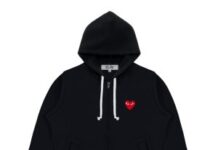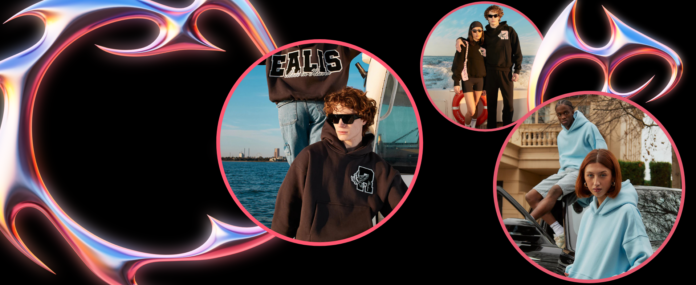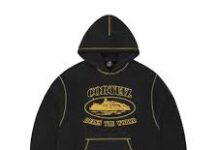Realism clothing, rooted in the broader art and cultural Realism movement of the 19th century, has evolved into a compelling fashion philosophy that centers on authenticity, functionality, and representation of everyday life. In stark contrast to the elaborate and often idealized styles of Romanticism and fantasy-driven fashion, Realism clothing emphasizes the unembellished, the practical, and the true-to-life. In today’s fashion landscape, Realism has found new relevance as designers and consumers alike seek clothing that reflects real-world experiences, body types, and social realities.
This article explores the origins, characteristics, evolution, and contemporary interpretations of Realism clothing, as well as its impact on ethical fashion, sustainability, and consumer identity.
Historical Background: Realism in Art and Society
Realism as a cultural movement began in France in the mid-19th century as a reaction against Romanticism. Realist artists such as Gustave Courbet, Jean-François Millet, and Honoré Daumier rejected the dramatic, emotional, and mythical themes of Romantic art in favor of depicting ordinary people and everyday situations. This ideological shift had a profound effect on all creative expressions, including clothing and personal style.
Clothing during this era began to mirror these values. As industrialization expanded, people started to favor more practical attire suitable for urban work and domestic life. The garments worn by working-class individuals—once considered unworthy of artistic representation—began to influence mainstream fashion.
Core Characteristics of Realism Clothing
Realism clothing can be identified by several key attributes:
1. Function Over Fantasy
One of the central tenets of Realism fashion is functionality. Garments are designed for everyday wear, not for spectacle. The focus is on practicality—clothes that people can work in, move in, and live in comfortably. This includes sturdy fabrics, utilitarian cuts, and timeless silhouettes.
2. Minimalism and Simplicity
Realism Jumper often avoids excessive ornamentation. Instead of ruffles, embroidery, or extravagant colors, you’ll find clean lines, solid tones, and neutral palettes. This simplicity reflects a rejection of class-based excess and supports inclusivity and equality in dress.
3. Authentic Representation
Perhaps the most defining feature of Realism clothing is its emphasis on authentic representation. It showcases a range of body types, skin tones, and cultural identities. It promotes fashion that speaks to real lives and real issues—whether it’s working-class fashion, gender-neutral attire, or clothing made for diverse abilities.
Realism Clothing in the 20th Century
Realism clothing gained new layers of meaning in the 20th century, particularly during wartime and periods of economic hardship. During the World Wars, clothing had to be practical and resource-efficient. The widespread use of uniforms, rationed materials, and androgynous cuts aligned with Realist ideals.
In the post-war years, movements like the Beat Generation, the civil rights movement, and feminist activism adopted clothing as a tool for political and social commentary. Jeans, plain T-shirts, work jackets, and other non-luxury garments became symbols of solidarity with the common person and a rejection of elite fashion standards.
Modern Interpretations and Revival
Today, Realism clothing is experiencing a renaissance, fueled by several societal shifts:
1. Sustainability Movement
With the fashion industry under scrutiny for its environmental and ethical practices, many brands are turning to Realism principles. Garments made from natural or recycled materials, designed for longevity, reflect the Realist commitment to practicality and honesty.
2. Body Positivity and Diversity
Modern Realism fashion emphasizes inclusivity. Brands now feature unedited models of all sizes, ages, and ethnic backgrounds. Realism clothing acknowledges that fashion should not just cater to a narrow definition of beauty but embrace the diversity of human experience.
3. Streetwear and Workwear Influences
Streetwear—a style rooted in urban culture—often embodies Realist values. Oversized hoodies, denim, cargo pants, and functional sneakers express both utility and cultural authenticity. Similarly, the workwear trend, with its emphasis on durable fabrics and simple cuts, directly ties back to Realism’s roots in working-class fashion.
Realism in Design: Brands and Icons
Several designers and fashion houses have adopted Realist philosophies in their work:
- Maison Margiela: Known for its deconstructed garments and raw finishes, Margiela challenges the idea of perfection in fashion, embracing flaws and functionality.
- Everlane: A brand that promotes “radical transparency,” offering detailed breakdowns of production costs and factory locations, aligning closely with Realist values.
- UNIQLO: Their emphasis on minimalist, everyday basics appeals to consumers seeking simple, effective clothing without unnecessary embellishments.
Fashion icons who have helped popularize Realist style include Patti Smith, Steve Jobs, and more recently, normcore influencers who intentionally adopt plain, utilitarian clothing to reject consumerist trends.
Realism Clothing and Cultural Commentary
Realism fashion isn’t just about what we wear—it’s also a statement about how we live and what we value. In a world increasingly dominated by digital filters, fast fashion, and curated social media aesthetics, Realism clothing pushes back by embracing truth and imperfection.
It also opens up critical dialogue about class, labor, and access. Who gets to participate in fashion? Who is represented? Realism challenges the gatekeeping traditionally found in the industry and shifts the focus to authenticity over spectacle.
Conclusion
Realism clothing is more than a trend—it’s a movement grounded in integrity, inclusivity, and practical beauty. Born from a broader cultural desire to depict life as it truly is, it has shaped generations of fashion and continues to evolve with contemporary needs. As consumers seek meaning and ethics in their purchases, Realism clothing offers a wardrobe—and a worldview—that’s both grounded and liberating.
































